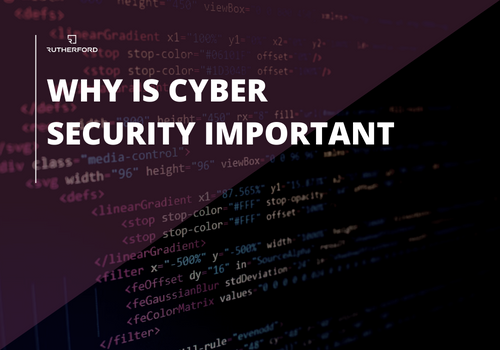The Importance of Cyber Security
Cyber security is crucial as it safeguards all types of data against theft and loss. This endpoint protection can extend from personal information to financial and sensitive government data.
In the grand scheme of the corporate world, cyber security as a discipline is still developing - the technosphere continues to evolve rapidly, and so do cyber threats.
To put things into perspective, four in ten businesses and a quarter of charities in the UK reported cyber breaches and attacks within the last 12 months, equating to roughly 2,200 cyberattacks per day and over £736 million in direct losses. The result? A staggering £2.5 billion in total damages across the United Kingdom.
With the world becoming increasingly digital, a cybercrime is just one click away. As organisations and individuals rely more on technology, everyone — from small businesses to multinational corporations - becomes a potential target for cybercriminals.
What Is Cyber Security?
In its simplest form, cyber security is the proactive and ongoing protection of systems, networks, and data from digital attacks. Specialists in this field aim to reduce the risk of cyberattacks and mitigate their impact should they occur.
Cyber security can be divided into two main components:
Device Protection – safeguarding the hardware and systems individuals and businesses use.
Service Protection – securing the applications and networks that power business operations.
Information Protection – defending the personal and sensitive data stored across these systems.
Understanding Cyberattacks
What Are Cyberattacks?
Cyberattacks are deliberate attempts by cybercriminals to exploit vulnerabilities in systems, networks, or users for financial gain, disruption, or data theft. These attacks can range from targeted strikes on large corporations to widespread scams affecting individuals.
Types of Cyberattacks
Phishing: Deceptive emails or messages designed to trick users into revealing sensitive data.
Ransomware: Malicious software that locks systems or encrypts data until a ransom is paid.
Denial-of-Service (DoS) Attacks: Overloading a system or network to make it unavailable.
Malware: Viruses or spyware installed to steal, damage, or manipulate data.
Man-in-the-Middle (MitM) Attacks: Intercepting communication between two parties to steal information.
The Financial Impact
According to IBM’s Cost of a Data Breach Report (2024), the average cost of a data breach globally reached $4.88 million, with the financial services sector ranking among the most heavily targeted industries. Beyond direct losses, cyberattacks cause lasting reputational damage and regulatory penalties that can cripple even the strongest organisations.
Implications for Businesses
A single attack can expose confidential data, disrupt operations, and erode client trust. As cyberattacks become more sophisticated, proactive defence and continuous monitoring are essential to safeguarding business resilience.
The Rise of Cybercrime
Cybercrime has surged in recent years, driven by the rapid expansion of digital infrastructure and remote work. The National Cyber Security Centre (NCSC) reported that cyber incidents have increased by over 40% year-on-year, largely due to the growing sophistication of attackers and the accessibility of hacking tools on the dark web.
Key drivers include:
Increased use of cloud-based systems without proper security configurations.
The rise of remote work, expanding potential attack surfaces.
Growth in financially motivated cybercrime and ransomware-as-a-service models.
Advancements in AI-driven cyber threats that automate and scale attacks.
As technology evolves, so too does cybercrime - creating a persistent demand for skilled cybersecurity professionals and stronger corporate defences.
The Faces of Cybercrime
Cybercrime isn’t committed by a single type of perpetrator - it spans a range of actors with differing motives and levels of sophistication:
Individual Hackers: Lone offenders seeking financial gain or notoriety.
Organised Crime Groups: Networks that execute large-scale data breaches, ransomware campaigns, or identity theft operations.
State-Sponsored Actors: Government-backed hackers targeting critical infrastructure, corporations, or rival states for espionage or disruption.
Hacktivists: Ideologically driven individuals or groups using cyberattacks to promote political or social causes.
Each actor type contributes to the growing cyber threat landscape, forcing businesses to adopt multi-layered security strategies to mitigate risk.
Why Is Cyber Security Important Within Businesses?
Data breaches that expose customer information can devastate businesses - not only through financial loss but also through reputational damage. Customers expect their data to be handled securely, and a single breach can permanently erode that trust.
Moreover, with the rise of cloud-based solutions and third-party integrations, organisations are more exposed than ever before. Poor configuration of cloud systems or insufficient security controls create vulnerabilities that sophisticated cybercriminals can exploit.
A strong cybersecurity framework helps protect sensitive data, ensures compliance with global data protection regulations, and maintains stakeholder confidence.
The Impact of COVID-19 on Cyber Security
The 2020 pandemic reshaped the cybersecurity landscape dramatically. As remote work surged, so did system breaches. Black hat hackers became more active — with phishing attacks and fraudulent websites targeting remote employees.
The NCSC reported that 28% of all cyber incidents handled in 2020 were related to the pandemic. This period served as a wake-up call for businesses, pushing cybersecurity to the forefront of corporate priorities and accelerating investment in cyber talent and technologies.
What Is Cyber Crime?
Unlike traditional crimes, cybercrime occurs through computers or networks. Offenders exploit technology to gain unauthorised access, steal information, or disrupt systems.
Cybercrimes are generally divided into two categories:
Crimes targeting computers, such as malware or denial-of-service attacks.
Crimes using computers to commit other crimes, such as fraud, identity theft, and ransomware.
Common examples include phishing, financial data theft, identity fraud, ransomware, and the illegal sale of stolen information.
What Are the Types of Cybersecurity?
Cybersecurity is an umbrella term covering several key areas:
Network Security: Protects internal networks from intrusions.
Application Security: Secures software from vulnerabilities during development and deployment.
Information Security: Safeguards sensitive data from unauthorised access.
Cloud Security: Protects data and infrastructure hosted on cloud platforms.
Operational Security: Manages processes that handle data protection and permissions.
Disaster Recovery and Business Continuity: Ensures systems remain functional after a breach or attack.
Understanding these categories helps organisations create comprehensive defences that address every layer of potential vulnerability.
The Consequences of Poor Cyber Security
Poor cybersecurity can lead to catastrophic losses — from financial theft and regulatory fines to loss of client trust and operational downtime. Attacks often remain undetected for months, allowing malicious software to spread quietly.
Recovering from a cyberattack often requires significant investments in new systems, audits, and remediation measures. The cost of prevention is almost always lower than the cost of response.
The Importance of Protecting Personal Information
With identity theft and data breaches on the rise, protecting personal information has never been more critical. Businesses and individuals alike must adopt proactive security measures such as strong passwords, multi-factor authentication, and encryption.
Staying informed about evolving threats and implementing robust data protection policies can significantly reduce the likelihood of falling victim to cybercrime.
The Case Study: The Uber Cyber Attack
The infamous Uber breach serves as a stark reminder of the consequences of insufficient cyber defence. Hackers gained access through a social engineering tactic, manipulating employees to reveal authentication credentials. The breach exposed data from 57 million users and drivers, leading to reputational damage and millions in financial losses.
Uber’s experience highlights how underinvestment in cybersecurity can have far-reaching effects - both operationally and financially. Since the attack, the company has drastically increased its cybersecurity hiring, reflecting a global trend of rapid talent demand in the sector.
Cyber security remains one of the fastest-growing and most essential fields worldwide. As the frequency and sophistication of attacks continue to rise, building resilient systems and investing in skilled professionals has never been more critical.
Contact
If you wish to find a trusted and specialist cyber security recruitment firm, then get in touch with Rutherford's cyber security recruiters.






.png)




